August 8, 2025 | 12:37 GMT +7
August 8, 2025 | 12:37 GMT +7
Hotline: 0913.378.918
August 8, 2025 | 12:37 GMT +7
Hotline: 0913.378.918

Dong Nai province's interdisciplinary team continuously caught illegal slaughterhouses red-handed. Photo: Le Binh.
Being a livestock “capital”, Dong Nai is also known as a hot spot for illegal animal slaughtering. This is one of the reasons why disease control here is not guaranteed and people's health is thus affected. Eliminating unlicensed slaughterhouses is not only the task of Dong Nai's agricultural sector alone but also a common request from all levels and sectors.
It is fair to say that the work of denouncing and handling illegal livestock and poultry slaughterhouses in Dong Nai has been carried out very effectively. However, many illegal slaughterhouses still operate regardless of the consequences, blatantly challenging legal regulations. Perhaps the word “battle” is the most fitting to describe the struggles against the problem of illegal slaughterhouses in Dong Nai.
To detect and handle illegal pig slaughterhouses, the authorities must face dangers. It is not a rare case when owners of illegal slaughterhouses are uncooperative and even resist fiercely when suddenly inspected by an interdisciplinary team.
The interdisciplinary team normally consists of many units such as the Department of Environmental Police from the provincial police force, Dong Nai Sub-department of Livestock Production and Animal Health, Department of Market Management, and People's Committees at all levels.
To owners of illegal slaughterhouses, this inspection work implies that the animal health sector is the focal point or informer. Therefore, many times these subjects targeted their attacks at officers of the Dong Nai Sub-department of Livestock Production and Animal Health.
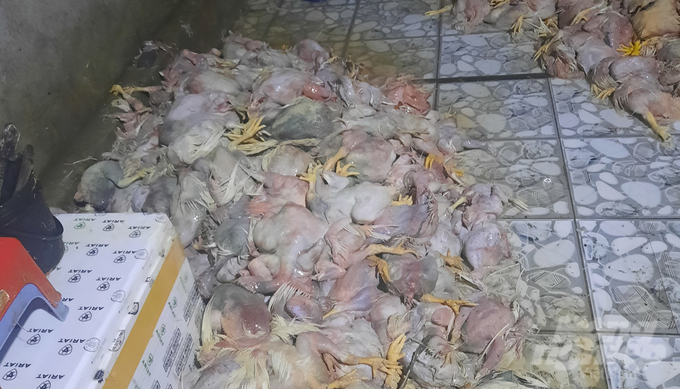
If not detected early, these rotten chickens will be "enchanted" and consumed at spontaneous markets, collective kitchens or roadside shops. Photo: Le Binh.
“We are constantly being called by these people. They sometimes curse or even threaten our lives. Because of the mission, we accept these attacks. We reassure each other to see it through to the end. However, there are cases where we have to ask the police for intervention before things go too far," said Nguyen Truong Giang, Director of Dong Nai Sub-department of Livestock Production and Animal Health.
In many districts, not only the officers of the Livestock Production and Animal Health Station and the District Department of Agriculture and Rural Development but also the armed forces could not avoid fierce resistance from the owners of illegal slaughterhouses.
“At the time we were on duty, most of the facilities were occupied. Following the reflexes and direction of the facility owner, these people used tools such as knives, hammers, and logs for defense and threats. Fortunately, these individuals soon realized their wrongdoing after being counseled. We also had to notify the local authorities to make a record and have appropriate remedial measures," said Lieutenant Duong Duc Loc, reconnaissance officer of the Department of Environmental Police (Dong Nai Provincial Police).
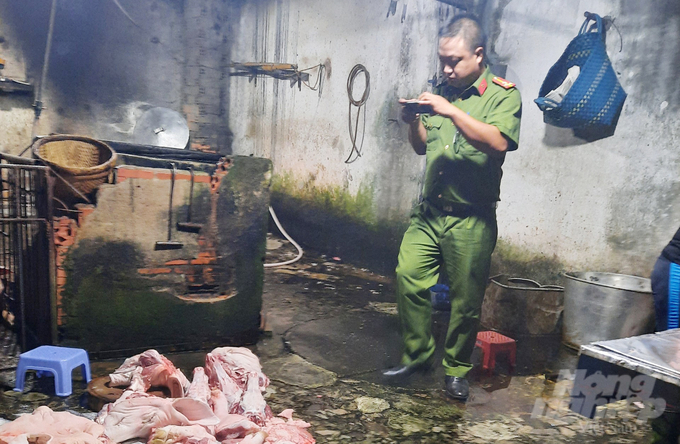
With the drastic intervention of forces, departments and branches, Dong Nai hopes to soon eliminate the situation of slaughterhouses illegally operating as it has been for many years. Photo: Le Binh.
According to Dong Nai Department of Agriculture and Rural Development, despite continuously destroying unlicensed facilities, the whole province still has 142 illegal slaughterhouses. Bien Hoa city holds the largest number with 42 establishments existing, followed by Trang Bom, Nhon Trach, Tan Phu, Vinh Cuu, Dinh Quan, Cam My and Thong Nhat districts.
These establishments often operate at night, constantly change locations and do not follow any rules, so they are difficult to detect. These lawbreakers arranged many layers of warnings. As soon as there was a move from the authorities, they immediately destroyed evidence or tried to escape. In particular, at the end of the year, the demand for livestock products is greater, so the “battle” against illegal slaughterhouses becomes even more intense and dangerous.
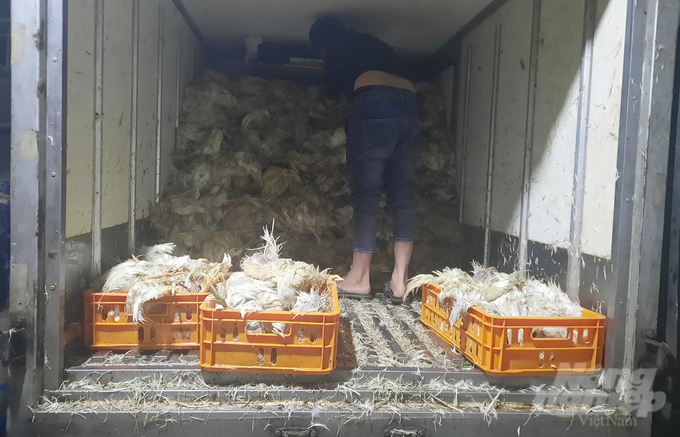
Dong Nai will strongly handle illegal slaughterhouses with many different measures, both managing the consumption stage and applying technology to trace product origin. Photo: Le Binh.
Since the beginning of 2021, Dong Nai People's Committee has approved the scheme for a network of centralized animal slaughterhouses in the province until 2025, with a vision to 2030. Unlicensed slaughterhouses are considered a problem that needs to be eliminated so that Dong Nai can develop its economy through a centralized slaughter system, stabilize society and ensure consumer health.
“Punishing or eliminating illegal slaughterhouses is just going one step behind. If there is demand, there will be supply. Therefore, we will strongly handle the demand part first, strongly controlling the consumption stage. Hopefully, when market controls are tightened, these illegal establishments will also be cast out," said Vo Van Phi, Vice Chairman of Dong Nai People's Committee.
Translated by Samuel Pham
![Sky-high reservoirs on rocky plateau: [3] A catalyst for ecotourism development](https://t.ex-cdn.com/nongnghiepmoitruong.vn/608w/files/huyenvt (e)/2025/08/07/3722-3-101858_203.jpg)
(VAN) More than just quenching the thirst of dry areas on the rocky plateau, hanging reservoirs are now contributing to the development of ecotourism.
![Sky-high reservoirs on rocky plateau: [2] Quenching the thirst in Can Chu Phin](https://t.ex-cdn.com/nongnghiepmoitruong.vn/608w/files/huyenvt (e)/2025/08/06/4406-4-214016_602.jpg)
(VAN) For nearly two decades, villages on the rocky plateau have had their thirst eased thanks to hanging reservoirs and solid water storage tanks built under poverty reduction projects.

(VAN) Ho Chi Minh City and Hyogo Prefecture strengthen cooperation on green transition, creating opportunities for clean agriculture, environmental technology, and climate change adaptation training.
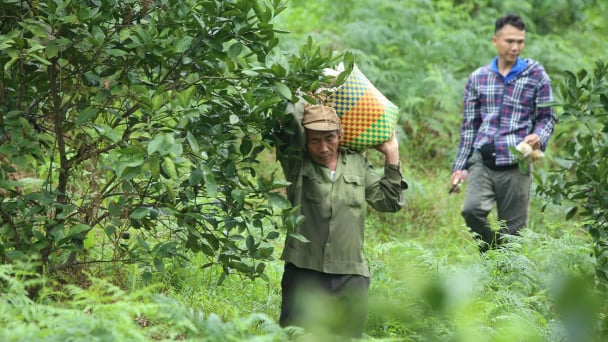
(VAN) With abundant water resources, North Central Vietnam is nurturing pineapple, tea, and citrus trees into sustainable brands, closely tied to resource management and a vision for development.
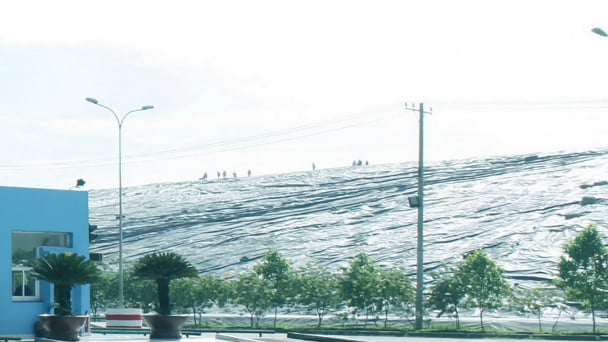
(VAN) Ho Chi Minh City is implementing a comprehensive set of measures to ensure that over 90% of municipal solid waste is treated using advanced, modern technologies by 2030.
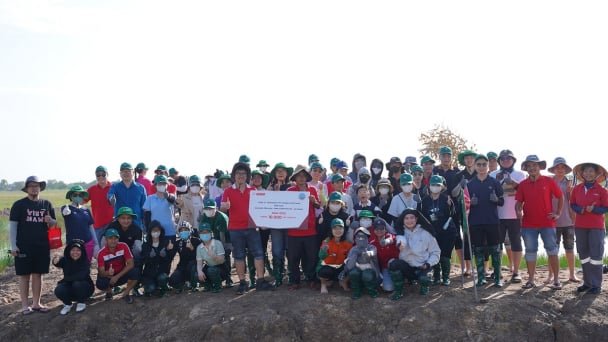
(VAN) INSEE Vietnam has planted 10,000 melaleuca trees at the Phu My Conservation Area, a new step in its goal to achieve a net positive impact on biodiversity by 2030.
![Sky-high reservoirs on rocky plateau: [1] ‘Water bags' at 2,000-meter altitude](https://t.ex-cdn.com/nongnghiepmoitruong.vn/608w/files/huyenvt (e)/2025/08/06/2024-1-160621_730.jpg)
(VAN) If the 'Happiness Road' is considered the first man-made heritage of the rocky plateau, then the hanging reservoirs at an altitude of 2,000 m might be its second.